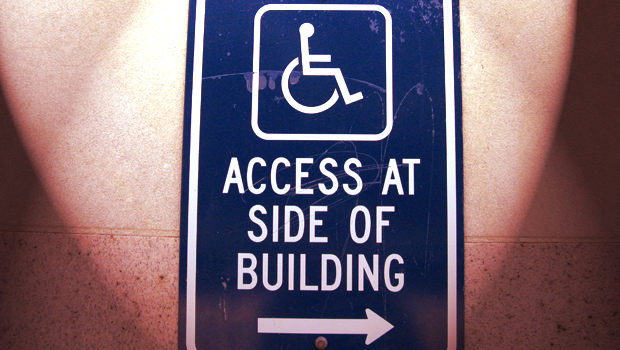

Approaches to making multimodal texts accessible almost exclusively focus on making access happen by retrofitting or adding on new material or accessible elements in response to user feedback. Jay Dolmage’s “Mapping Composition: Inviting Disability in the Front Door” (2008) provided an important explanation of retrofitting. He wrote, “To retrofit is to add a component or accessory to something that has already been manufactured or built. This retrofit does not necessarily make the product function, does not necessarily fix a faulty product, but it acts as a sort of correction” (p. 20). These corrections are always reactive, responding to situations or problems that arise, rather than seeking to anticipate potential concerns with the design or production of a multimodal text or environment. Unfortunately, by the time a user has complained about a lack of accessibility, the moment of communication has often passed. Thus, users who find kairotic spaces inaccessible have already been excluded by the multimodal inhospitality of many multimodal texts and environments. What is more, change is difficult, if not impossible to realize in many multimodal texts.
Let me return to the “Academic Minute” referenced in Price’s essay to illustrate the limits of retrofitting as a means for providing access to multimodal texts and environments. Note the retrofit: adding a transcript to the comments section of the site. While I commend Jeff Grabill (2011) for posting the transcript quickly enough for users to still participate in the kairotic spaces in which writing teachers were buzzing about his audio file, transcripts as a retrofit to multimodal texts, including audio files and videos, remain problematic. First, transcripts exist as an object separate from the audio file or video itself (although they are sometimes part of the web page in which audio and video may be embedded). In the case of transcripts for video content, it is almost impossible to read a transcript and watch a video the same time because doing so requires your eyes to be focused simultaneously on two different things. Sometimes, on YouTube, transcripts are provided in the “more information” section of the page. But reading those transcripts often entails scrolling down the screen so that one cannot see the video anymore, or opening two browser windows—one to display the video and one to display the transcript.
I am not criticizing the use of transcripts per se. What I am criticizing is first, the method of making things accessible after the fact, only after people complain, as happened with Grabill’s “Academic Minute” ![]() , and, second, of rendering accessibility by offering resources that stand outside of the multimodal text or environment itself.
, and, second, of rendering accessibility by offering resources that stand outside of the multimodal text or environment itself.